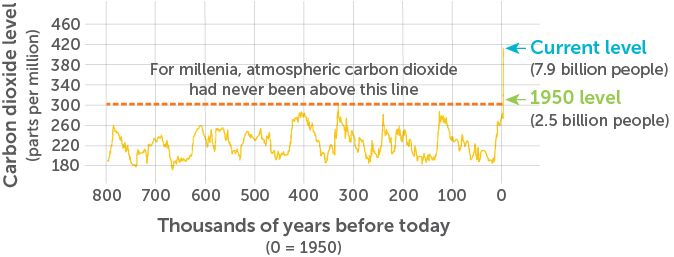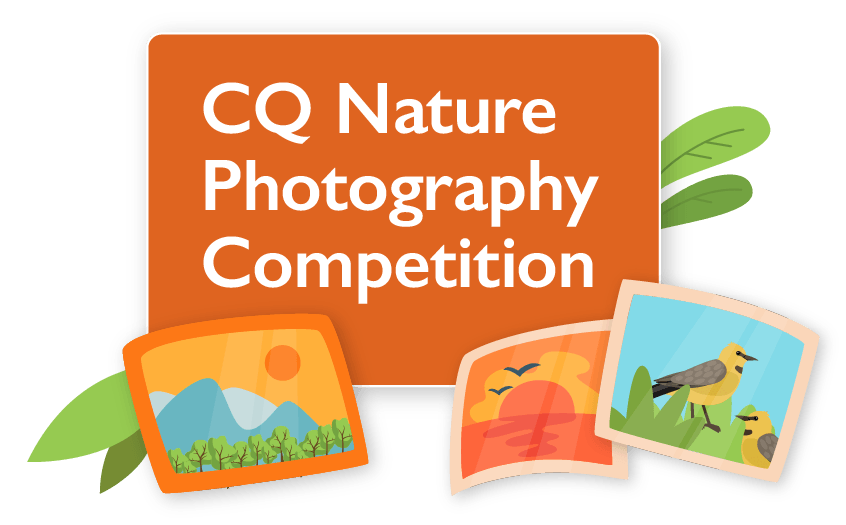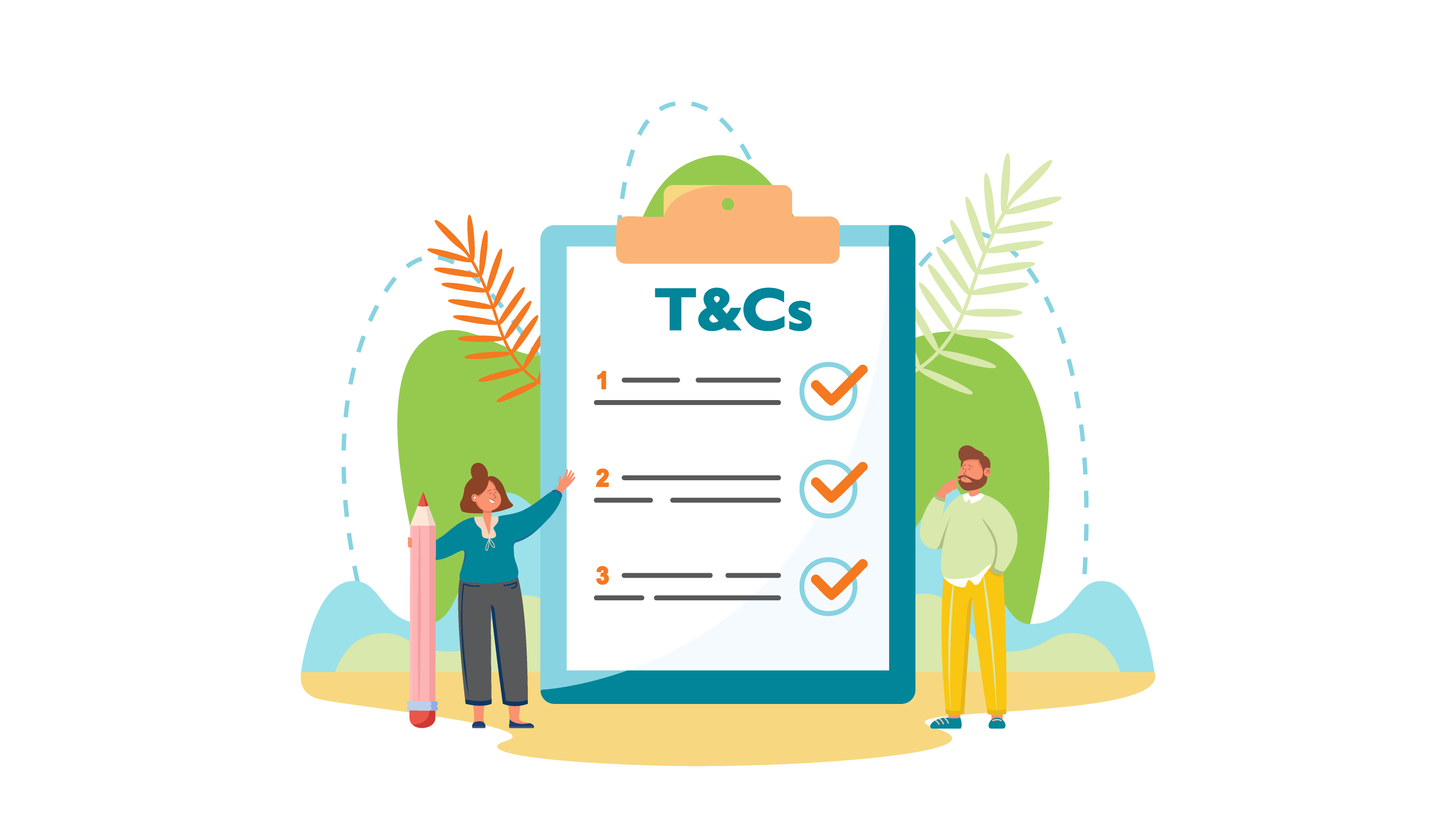People
The actions we take every day impact the world around us. Whether we realise it or not, each of us is helping drive our region’s future and what it brings.
People are our biggest asset and threat
While we often talk about people as separate to the natural world, we are in fact, an integral part of it. We have relied on and modified our surroundings since time immemorial, and we constantly change and respond to the world around us in both positive and negative ways. As our population grows, we need to consider whether we’re making the best decisions for our future and the environment that supports us.
People are important drivers, so much so, the current geological age has unofficially been termed the Anthropocene to highlight our dominance and the impact our activities have on the climate, other species and ecosystems. One of the greatest challenges of our time, climate change, is now primarily influenced by us burning fossil fuels. Known as human-induced (or Anthropogenic) climate change, we are causing unprecedented shifts in natural systems. While this is a genuine cause for concern, it is important to remember that people are also the solution!

People achieve amazing things because we can:
- innovate new approaches and technologies to solve complex economic, health and environmental problems
- build and purchase companies, products and services that reduce negative impacts on our planet and promote positive change
- access knowledge and support one another right around the globe
- learn quickly and choose to adopt and promote sustainable practices
- commit spaces and resources to improve habitats for native plants and animals and the ecosystem services they provide
- work together to support and protect the natural ecosystem services that sustain us
DID YOU KNOW? Planting trees doesn’t just help mitigate climate change and provide homes for animals; it makes our communities more liveable! A single tree can absorb an estimated 3000 litres of storm water, filter 27 kilograms of pollutants from the air and provide a cooling effect equivalent to 10 air conditioners running continuously.
Source
Choosing to look after our natural environment in whatever way we can is looking after ourselves and generations to come. Every action, no matter how small, makes a difference!
Threats to our environment ultimately threaten us
You’ve probably heard the phrase ‘There is no PLANet B’. The interconnectedness of nature and our way of life is often underestimated and along with it, the impact that our actions and consumption patterns have on everything and everyone around us. Any damage to the environment ultimately loops back to impact us – sometimes immediately, and sometimes not for many generations. While it is true a singular action is small, if you multiply it by the number of people in our region (350,000+), in our country (25.79 million) or on our planet (7.9 billion), cumulatively that one action can make a very big difference to our health, livelihoods, lifestyles and future.
Below provides a snapshot of what has the biggest impact on people in our region and across the globe:
- The choices made every single day. These decide our immediate and long-term future because they can either help reverse or accelerate everything outlined below.
- Population growth. The earth is limited in what it can provide which means there is less there is to go around as our population increases.
- Extreme weather events, hotter heat waves and longer fire seasons. These all threaten our personal health, homes and food and water security either directly or indirectly.
- The disappearance or impairment of vital ecosystem services. These underpin our ability to grow sufficient nutritious food, access clean water, and breathe clean air. They also help buffer our coastlines and homes against the impacts of extreme weather.
- Rising sea levels. This is changing Australia’s coastline, some countries are literally going under, and it also threatens the Great Barrier Reef and associated livelihoods.
- Arguing and pointing fingers rather than accepting responsibility to find solutions that meet everyone’s needs. We all have valid concerns worthy of consideration.
DID YOU KNOW? The World Economic Forum’ 2021Global Risk Report announced the top three most likely global risks were environmental, two of which are directly linked to people. The good news is, we are in direct charge of removing two of our biggest risks!
Discover the biggest threats to this driver
 We’re part of the lucky country, but for how long?
We’re part of the lucky country, but for how long?
Central Queensland is known for offering a relaxed and affordable lifestyle, and we are spoiled for choice when it comes to natural assets; the most accessible part of the world renowned Great Barrier Reef is literally on our doorstep. That being said, our region is also projected to experience some of the greatest average temperature increases in Australia, and is already losing coastline to rising sea levels. This will put additional pressure on our unique land and seascapes as well as our regional services, industries, communities and economy. Coupled with a global population set to increase by 2 billion people over the next 30 years, the question our region needs to answer is:
How can we work together and sustainably manage our finite natural resources to ensure we have sufficient land, food, water, energy and materials to support our lifestyles and livelihoods into the future?
Together we can achieve it!
DID YOU KNOW? Our global footprint means we now consume 1.75 times what the earth can re-generate each year. The beauty of our unsustainable behaviours is that people around the globe are creating sustainable alternatives with unusual and exciting innovations!
Source
![]()
Time to think and talk about this! Most things are okay but current trends are borderline and could easily head downhill.
Asset status is a ready estimator based on:
- Global, Australian and Queensland reports
- The likely impact on our businesses, communities, economy and future if we change nothing in the next five years
- Results of the 2020 regional natural assets community survey
Our region is not at a point where available data can be collated and analysed using a scientifically validated model to produce an accurate report on the status of our region’s six region’s natural assets and two key drivers.



